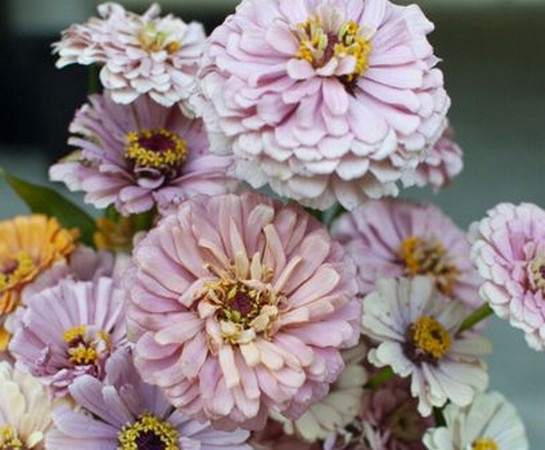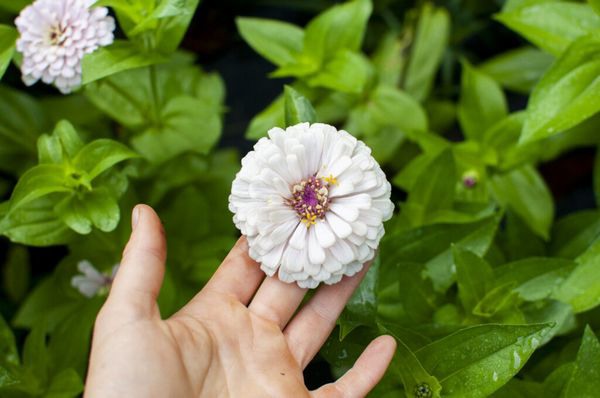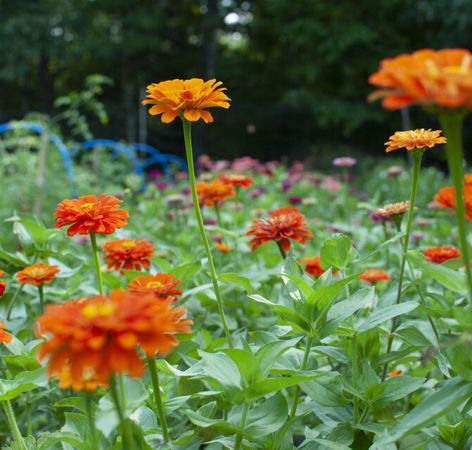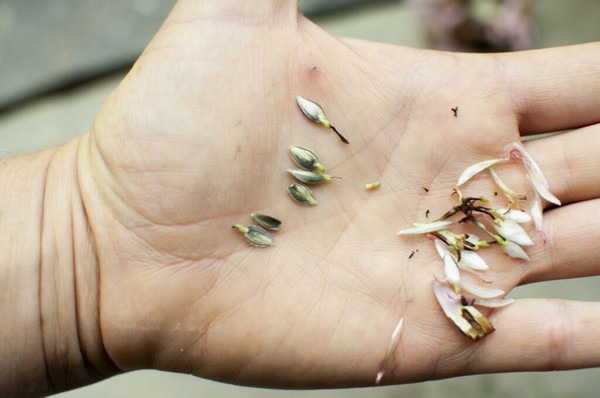Who doesn’t love zinnias? They are quick to start from seed, easy to grow, and attract butterflies to your garden. Zinnias also make lots of beautiful flowers with long stems for arranging, writes Samantha in a blog at seachange.farm.

Photos by Adam Okimatsu
Zinnias come in a rainbow of different colors. In 2020, I purchased a small packet of very special zinnia seeds from Dawn Creek Farm, where they had been working for years to breed softer-colored zinnias. I bought their unique mix of seeds from that project.
We grew those seeds in 2021. We isolated them from all other zinnias, so they would cross-pollinate with each other but not with other, brighter-colored zinnias. There were also differences in the colors of the zinnias’ center disks. The unopened disk florets in the very center showed up in different colors, as did the ring of open disk florets.
These two flowers share the same petal color, but the top one’s opened disk florets are bright yellow, and the unopened center disk is a bright red. The bottom flower’s center disk and disk florets are more muted purple colors. These differences make the blooms feel very different from each other. I put organza bags over these blooms and came out with a paintbrush to spread pollen by hand.
Pollinating the zinnias by hand was very tedious. I also learned that the plants’ pollen was at its freshest around noon, when I was usually at the farm and not home to pollinate. So I eventually ditched the bags and left the pollination up to the bees.

Leaving these plants to open-pollinate with each other does mean that we’ll have less control over the flowers that appear year.
As I’ve saved seeds from our zinnias this year, I have kept the colors separated, but I only know the seed parents for each seed we saved and not the pollen parent. 50% of the genetics are left up to chance!
There are ways of isolating individual plants from each other and trapping pollinators inside to assure that only the colors you want to get crossed with each other. Perhaps next year, we will try one of those strategies. Zinnias have two types of seed. One type of seed forms at the ends of the zinnias’ petals. These are the ray seeds, and they form from cross-pollination.
The little thread-like things in the image below have a sticky coating that collects pollen from visiting bees, and that’s what pollinates the seed at the end of each petal. The other type of zinnia seed is a self-pollinated seed, so it may or may not produce a viable plant. These seeds are disk seeds, and they form in the center of the zinnia flower head. They have a different shape and color from the ray seeds.

For more information:
Seachange
www.seachange.farm
